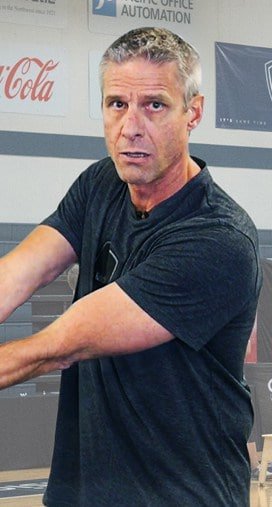Volleyball serve-receive drills don’t usually register high on the fun meter for most high school or juniors’ players.
“Kids don’t like to practice serve receive,” says Karin Keeney, head volleyball coach at Hebron High School, a volleyball powerhouse in Carrollton, Texas.
Popular or not, the Hebron team works on serve receive frequently because it’s such a crucial part of the game, and Keeney has found a way to make it more enjoyable with fast-moving, competitive passing drills that include live serving.
Volleyball serve receive drill for high school players
One popular serve receive drill at Hebron is called Wave. The drill focuses on serving as well as passing. Here’s how it works:
Divide into teams of three
Players divide into teams of three. One team goes behind the service line to serve, another goes into a line pattern serve-receive formation. The other two teams fill the same roles on the opposite side of the net.
Serve one at a time
Players on the serving team serve one at a time from different positions behind the end line. Servers are not allowed to serve the same spot on the court twice; if they do, they have a penalty (burpees, pushups, etc.).
Collect points
Each receiving team has a target player or coach at the net in the setter position. The passers’ job is to collectively make 10 good passes to the target. The target person keeps score. If there’s an overpass or if the ball hits the floor, the team’s score goes back to zero.
Rotate
After three good passes, passers rotate within their receive line, so the left-side passer goes to the right side, the right-side passer goes to the middle and the middle passer goes to the left side. This gives all players practice from three different receive positions.
The drill lasts two minutes. If passers don’t get 10 “good” passes in that time, they run sprints or perform some other physical exercise. To make it more challenging, coaches can require perfect passes rather than just good passes.
Once two minutes are up, all players go to a new spot: servers in the back become passers, passers on the same side become passers on the other side, and passers on the other side move back to replace the servers, who loop around to serve on the other side of the net.
Teaching servers to hit different spots on the court
Aside from good passing practice, the Wave drill is great because it also gives servers multiple reps. Keeney has a rule that servers can’t serve to the same passer twice in a row. This teaches players to work on accuracy, which they’ll need when coaches ask them to serve different zones during game situations.
In this video, USA Youth National Team Coach Jim Stone explains how servers can put more pressure on the opposing team’s passers by pinpointing specific areas of the court, especially the seams between the passers.
Helping players develop good all-around skills
The best volleyball teams, especially at the juniors’ level, have multiple players with well-rounded skills. To cultivate this type of versatility, Keeney has every player on her team participate in the passing rotations in the Wave drill.
“It doesn’t matter if you are a setter or a middle, all my kids pass,” she says. “Everybody does everything.”
Fast equals fun
The Wave drill keeps players engaged at all times. If you’re in serve-receive, you have to pay close attention because serves are coming at you in rapid succession. If you’re a server, you need to stay focused because you aren’t allowed to hit the same serve over and over. As a bonus, the drill is competitive – a race to see who can score 10 points first. Add it all up and it’s a fun and productive two minutes of volleyball.


